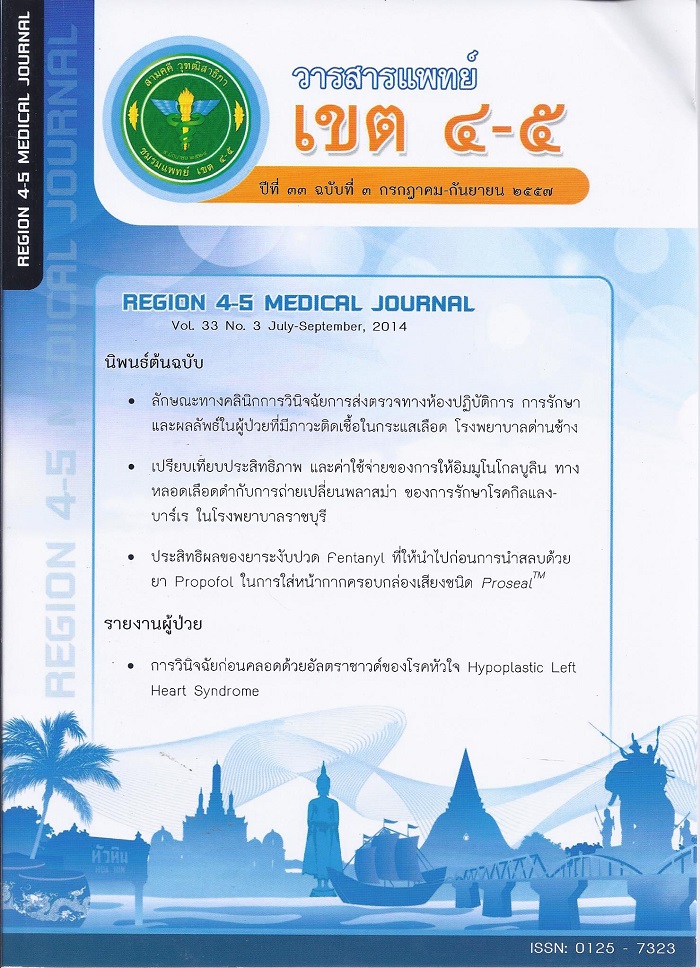การศึกษาโรคไขสันหลังอักเสบเฉียบพลัน ในโรงพยาบาลราชบุรี
บทคัดย่อ
Introduction: Epidemiological studies on acute transverse myelitis (ATM) in Thailand are scarce. The aim of study was to describe demographic, clinical and para-clinical features of patients with ATM in Ratchaburi. A further objective was to determine the aetiologies of ATM.
Methods: All patients diagnosed with ATM between September 1, 2009 and September 30, 2014 were retrospectively identified, using the Transverse Myelitis Consortium Working Group (TMCWG) criteria.
Results: A total of 32 patients diagnosed with ATM (21 females, 65.6%) were included. Of these patients, 53.1% (n =17) had idiopathic ATM, 25% (n = 8) had clinically isolated syndrome (CIS), 9.3% (n = 3) had multiple sclerosis (MS), 6.3% (n = 2) had neuromyelitis optica (NMO) and 6.3% (n = 2) had postinfectious myelitis (PIM). The Idiopathic group had more mean age, mean score level of disability and oligoclonal bands (OCB) negative than other groups, including the Idiopathic group which had OCB negative. The OCB negative group had more mean age, mean score level of disability than OCB positive group. The multisegmental lesions and longitudinally extensive myelitis had more mean score level of disability than partial myelitis (p-value < 0.05). After 3 months of follow-up, 40.6% (n = 13) of the patients had severe disability. The majority of severe disability patients had an multisegmental or extensive cord lesion detectable with spinal MRI.
Conclusion: Majority of acute transverse myelitis (ATM) was idiopathic group, had more mean age, mean score level of disability than other groups. The multisegmental lesions and longitudinally extensive myelitis with spinal MRI had more disability rate.
ดาวน์โหลด
เผยแพร่แล้ว
รูปแบบการอ้างอิง
ฉบับ
ประเภทบทความ
สัญญาอนุญาต
ลิขสิทธิ์บทความเป็นของผู้เขียนบทความ แต่หากผลงานของท่านได้รับการพิจารณาตีพิมพ์ลงวารสารแพทย์เขต 4-5 จะคงไว้ซึ่งสิทธิ์ในการตีพิมพ์ครั้งแรกด้วยเหตุที่บทความจะปรากฎในวารสารที่เข้าถึงได้ จึงอนุญาตให้นำบทความในวารสารไปใช้ประโยชน์ได้ในเชิงวิชาการโดยจำเป็นต้องมีการอ้างอิงถึงชื่อวารสารอย่างถูกต้อง แต่ไม่อนุญาตให้นำไปใช้ในเชิงพาณิชย์




